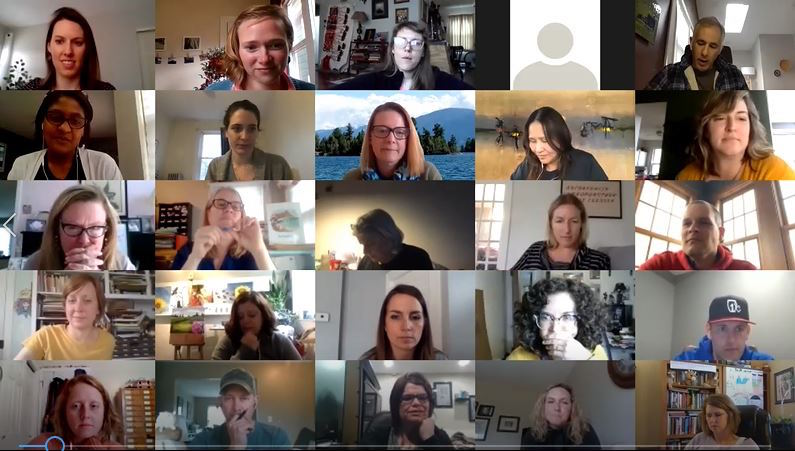Looking for some Back-to-School inspiration? We rounded up a few of our favorite resources for sparking creativity and supporting a culture of imagination.

Although CMA has reopened to visitors, teacher programs – like many of your classrooms – remain virtual. This presents opportunities to get creative about building community when we are apart.
#myCMAStudio – These playful prompts are versatile ways to spark creativity at any age, using materials you are likely to have around the house – like junk mail, scrap fabric, or old magazines.
This Creativity at Home resource packet was developed by artist, art teacher, and champion for creativity, Jason Blair. It’s full of prompts well suited for elementary-aged kids, and can be undertaken in as little at 10 minutes, or could become the basis of a long-term project.
CMA’s ODIP process (Observe, Describe, Interpret & Point to Evidence) is a teacher favorite for looking at all kind of things – from natural materials to primary sources to news websites’ “front pages.”
Remember that nurturing a culture of creativity is about more than just prompts for imagination, critical thinking, and making. CMA collaborated with teachers to create these lists of actions that support deep learning. Print them and post them wherever you plan and lead instruction.
Finally, we asked our two teacher co-leads for Cultivating Creative & Civic Capacities for some virtual-friendly, back-to-school community builders. Here’s what they shared:
From Britanie Risner: “Since we won’t be in person, I am going to start off asking them to create a Self-Portrait Without a Face. Include
– someone or something you love,
– Someone or something that makes you smile
– Something that represents how you feel
– Something that you want us to know
“I’m also going to experiment with physically mailing students prompts to create and send/share with classmates. For example, making postcards to send each other.”
From Jason Blair: “The ‘I Come From…’ poem is a powerful experience to create a sense of community and belonging. This poem is inspired by a collaboration with artist Stephanie Rond. As we begin a year of challenging, unknown, and at times even scary, this can be a way to develop a space of risk taking, vulnerability and perspective taking that can set the foundation for the C4 journey. This can be done in person or virtually. In person, give the students time to write their answers. Read one at a time.
I Come From…
• 1 Favorite article of clothing
• 2 Best memory
• 3 least favorite memory
• 4 What keeps you up at night
• 5 What calms you
• 6 Makes your blood boil
• 7 Defining moment
• 8 Favorite time of day
• 9 Best feeling
• 10 makes you smile
• 11 makes you cry
• 12 3 words that describes you
• 13 (a powerful adjective)_____________
• 14 (a color) ___________
“Tell the students to write only their answer to the lines as you read them. Then, ask them to fill in the final line, “I am all (write powerful adjective)______ and (write color)________ ?” Talk to the students about comfort level and risk-taking prior to this experience. Once the students are finished writing their poem, again, talk about vulnerability and lead by example by reading your own I Come From… poem. The way you read the poem is as follows.
I come from…
Read answer to #1
I come from…
Read answer to #2
And on and on.
The poem ends by reading this line.
I am all (#13 powerful adjective) and (#14 color) and it has made me who I am!
“After, have the students snap like a poetry reading as opposed to clapping. The intimacy of the poem lends itself more to snapping as a sign of appreciation and letting the reader know, you see them, you hear them, you value them and their journey.”
– Jen Lehe is CMA’s Manager of Strategic Partnerships, overseeing programs for learners throughout their lives. Jen directed the IMLS-funded Making Creativity Visible initiative and launched the Leaders in Creativity fellowship to build teachers’ capacity to advocate beyond their classrooms. Jen holds an Masters in Arts in Education from Harvard Graduate School of Education and a BFA in Photography from NYU. When she’s not at CMA, she’s gardening with her pit bull, Chompsky.
